Thursday, 12:01am
24 September 2015
Disappearing act
The Graphic Workshop was a Boston artists’ collaborative, whose ‘Endangered Species’ poster series is celebrated in a current exhibition.
By Paul Dobbs and Elizabeth Resnick
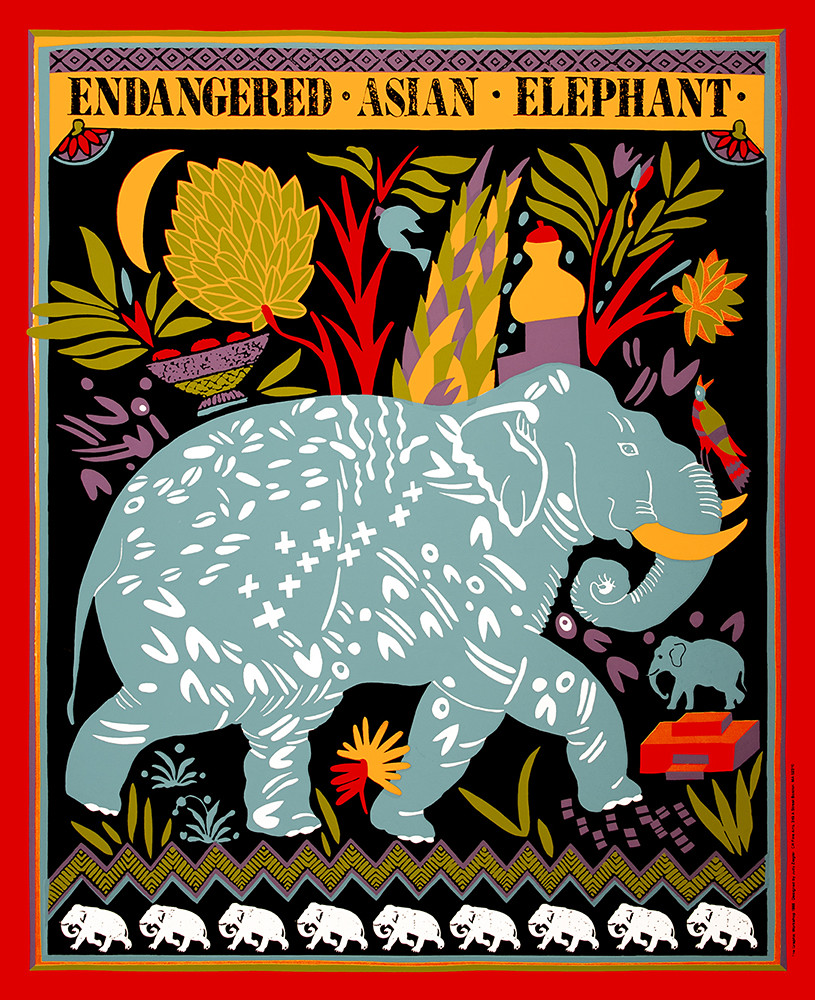
The Graphic Workshop was an artists’ collaborative in Boston that produced hundreds of remarkable silkscreen posters during a 22-year period, write Paul Dobbs and Elizabeth Resnick.
The posters and additional archival materials are on display in the Presidents Gallery at Massachusetts College of Art and Design in Boston until 25 September 2015. The exhibition, ‘Rebellion and Grace’, traces the group’s history as a model for moral action, collaboration, service and deep learning. What ignited the group’s rebellion and fueled their longstanding commitment were evils we continue to face: war, racism and environmental destruction.
Felice Regan, The Whale, 1978.
Top: Judy Ziegler, Endangered Asian Elephant, 1988.
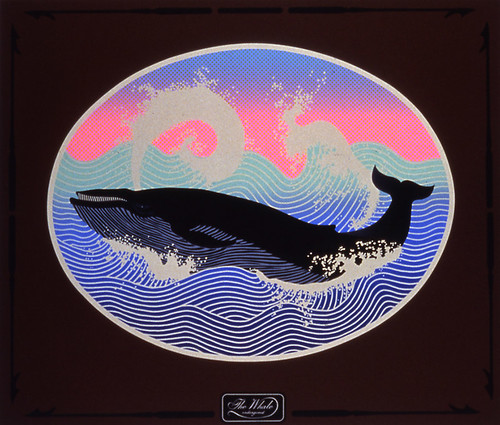
Agusta Agustsson, Barrington Land Iguana, 1977.
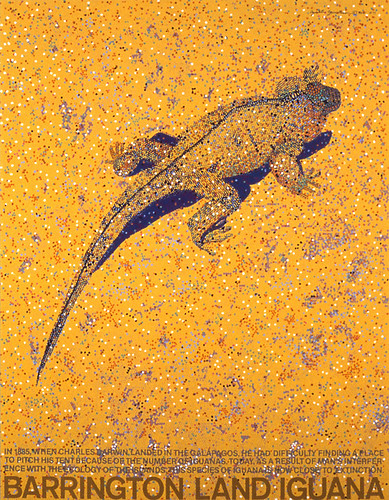
America in 1970 was unraveling. Richard Nixon’s announcement that the country would invade Cambodia and Laos triggered an unprecedented level of student protest. In an attempt to quell the outcry, authorities deployed National Guard troops and state police shot and killed four students at Kent State in Ohio and two students at Jackson State in Mississippi. Between those incidents, police shot and killed six young men protesting in Augusta, Georgia.
During the national student strike that followed, Massachusetts College of Art suspended classes, as did many other colleges and universities on the East and West coasts. With faculty help, MassArt students used the campus to organise community service activities. One was a round-the-clock silk-screening production centre that churned out posters, T-shirts, and armbands for protests in Boston and beyond. By September of 1970, the ‘Strike Workshop’, which by this time had moved to the personal studio of faculty member and painter Rob Moore, were ‘subsidized by blood, sweat, and friendship’.
Here, its collaborative nature would evolve and blossom. Renamed The Graphic Workshop, it ultimately became renowned for its endangered species posters; a series molded by the group’s passion for animals and for protecting wildlife. The endangered species poster series had its genesis in 1975 when John Walsh of the World Society for the Protection of Animals was pitching a series of programmes on endangered species to Boston’s public television channel WGBH. Walsh asked the Workshop to create posters that he could give as premiums to his backers. While Walsh’s pitch did not get funded, the first three posters were created for the San Francisco garter snake, the South American anteater and the Whooping Crane.
Chris Mesearch, The Anteater, 1976.
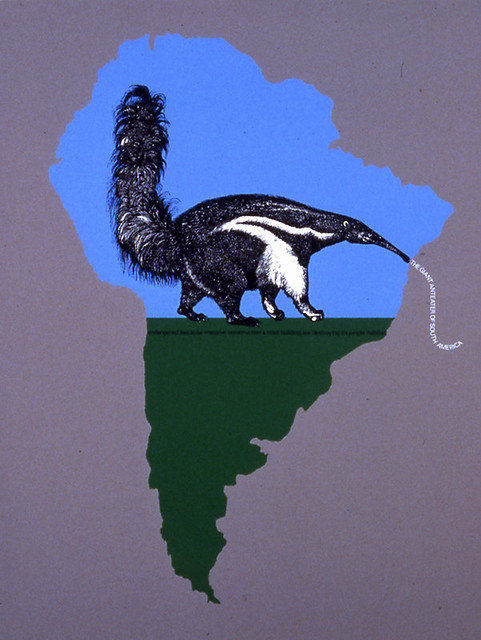
Paul Campbell, The Whooping Crane, 1977.
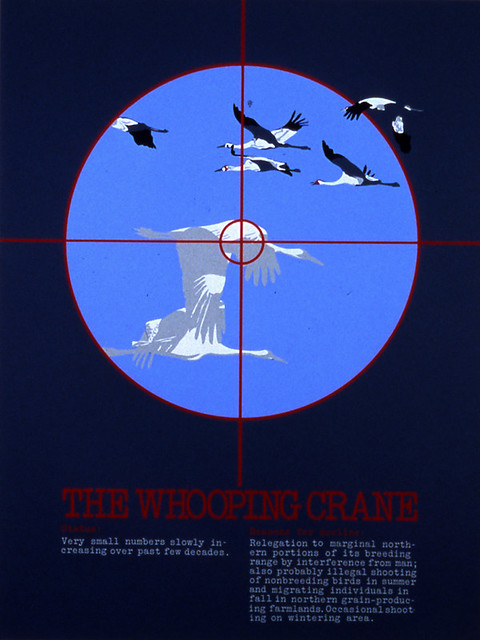
The Workshop was not discouraged in their determination to produce work at affordable prices. In all, the Workshop created 25 limited-edition silk-screen posters between 1975 and 1992. Each one advocates a deeper respect for the animal world. These posters are the legacy of dedicated and passionate young artists who sought to make a difference in their world.
Felice Regan, Chris Mesarch and Deb Jones were key artists among the MassArt students who launched the Workshop. Faculty member and painter Rob Moore, moved by the idealism and collaboration he witnessed, quickly became the group’s mentor and guardian. He provided space, food and philosophical leadership, as well as aesthetic acuity during the legendary group critiques. Felice Regan took on the finances and then later the entire operation during Rob Moore’s battle with AIDS and subsequent death in 1993.
Rob Moore, The Common Puffin, 1980.
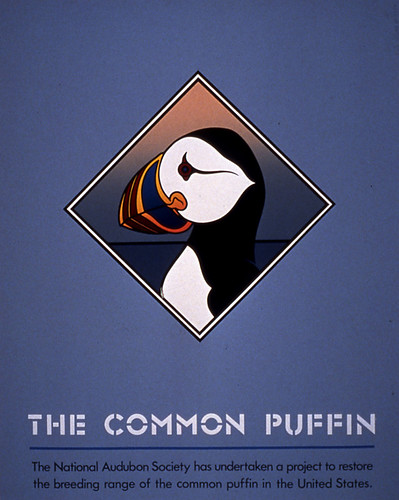
Scores of individuals contributed their ideas, labour and spirit to the Workshop. The named artists with posters in the current MassArt exhibition include Agusta Agustsson, Brian Alterio, Jill Anderson, Laurel Barney, Mary Beath, Leo Byrnes, Paul Campbell, Laura Caradimos, Anna Comolli, Sarah Creighton, Gary DePasquale, James DiSilvestri, Jeremy Foss (Professor Emeritus), James Gabriel, Michael Gabriel, John Hayes, Lisa Houck, Deborah Jones, Christine Kidder, Thomas Kuchinski, David Majeau, Judy Kensley McKie, Chris Mesearch, Robert P. Moore Jr, Felice Regan, David Sipress, John Weiner and Judy Ziegler.
‘Rebellion and Grace: The Graphic Workshop Exhibition 1970-1992’ was curated and organised by Paul Dobbs, MassArt Library Director; Sinclair Hitchings, the former Keeper of Prints at Boston Public Library; Elizabeth Resnick, MassArt Professor Emeritus; Darlene Gillan, MassArt Alumni Communications Director; and Felice Regan and Chris Mesarch, two of the founders of The Graphic Workshop.
Agusta Agustsson, Ivory-billed Woodpecker, 1988.
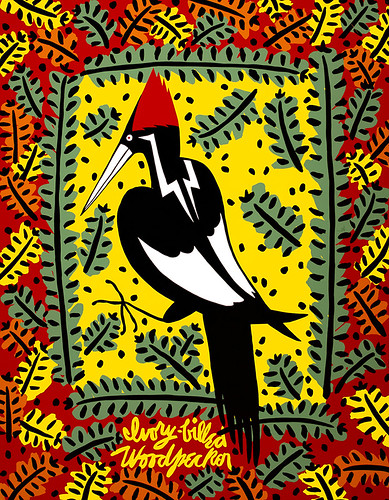
Paul Dobbs, director of Morton R. Godine Library, MassArt, Boston
Elizabeth Resnick, design educator and author, MassArt, Boston
Eye is the world’s most beautiful and collectable graphic design journal, published quarterly for professional designers, students and anyone interested in critical, informed writing about graphic design and visual culture. It is available from all good design bookshops and online at the Eye shop, where you can buy subscriptions and single issues.
